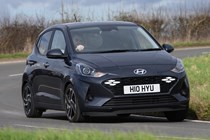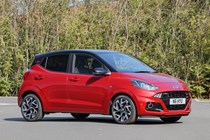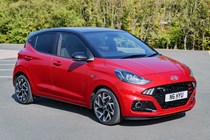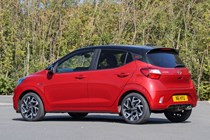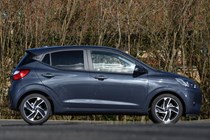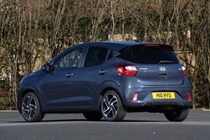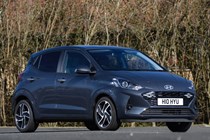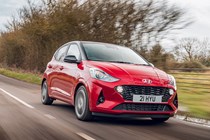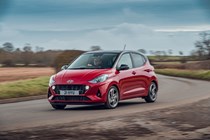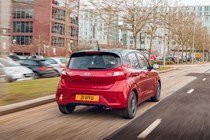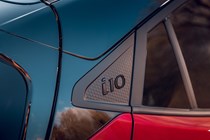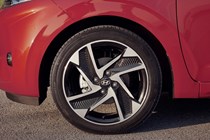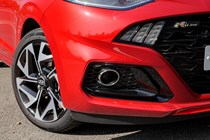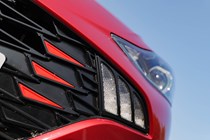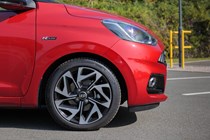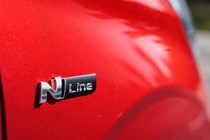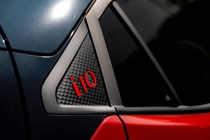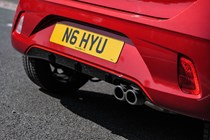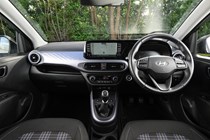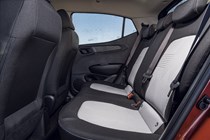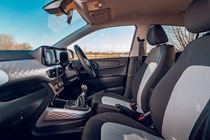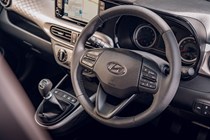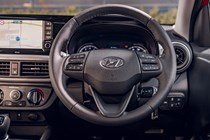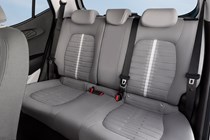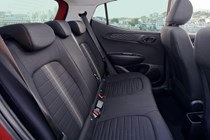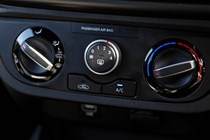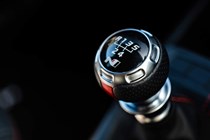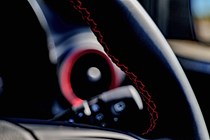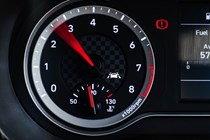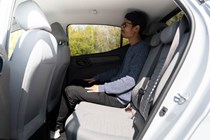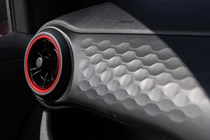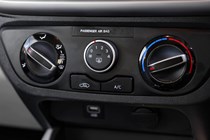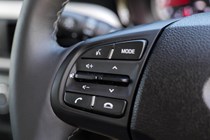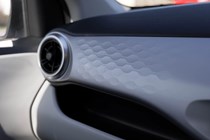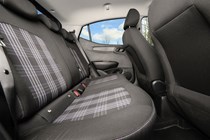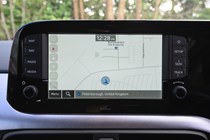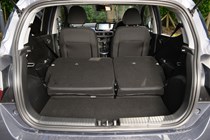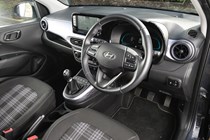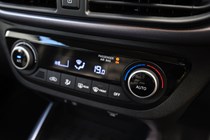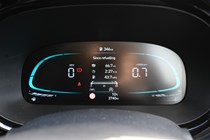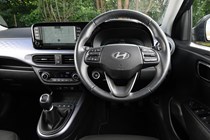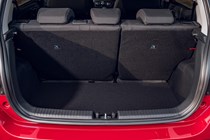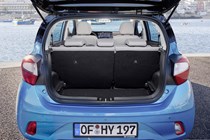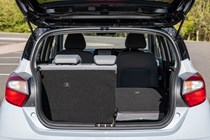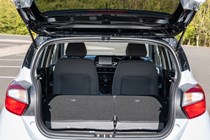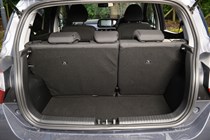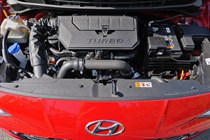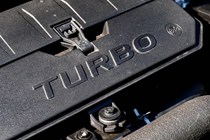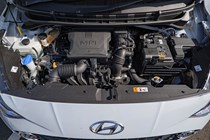
Hyundai i10 engines, drive and performance
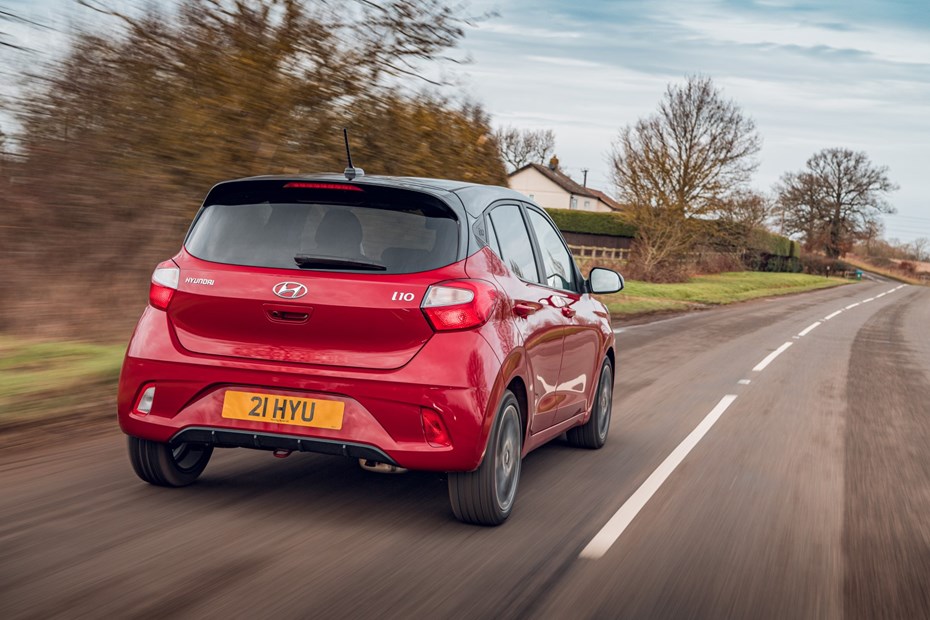
- 1.0-litre or 1.2-litre non-turbo petrols
- Sportier 1.0 turbo now added
- Automatic gearbox best avoided
Petrol engines
You can choose from three petrol engines in the Hyundai i10. The cheapest two are naturally aspirated, which means they make do without a turbocharger, and as a result they’re not especially well-endowed with power – but to be honest, on a city car, they don’t need to be.
The entry-level unit is the non-turbocharged 63hp 1.0-litre. This is pretty average for the class, and it results in a car that’s absolutely fine for use around town but does feel a bit strained on faster roads. Consider this choice carefully if you regularly carry at full capacity.
Getting up to motorway speeds requires you to be quite generous with your right foot, and even maintaining a cruise is tough if you’re on an incline. You’ll need to change down a gear to overtake in a timely fashion, too.
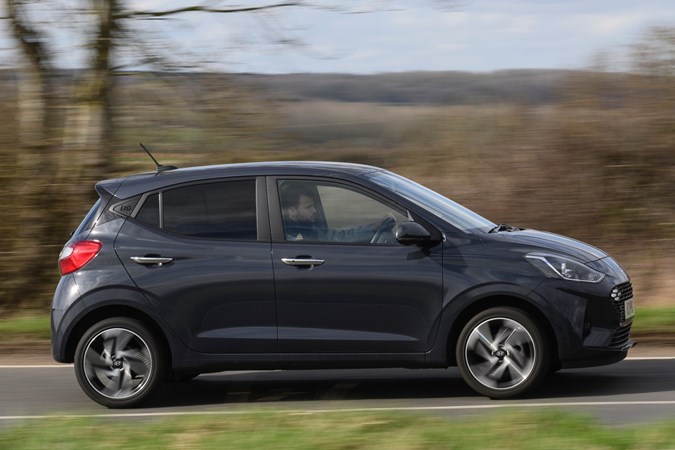
We think it’s well worth opting for the 1.2-litre engine instead. It’s not a huge amount faster than the 1.0 on paper, but it feels much more relaxed, especially outside the confines of the city. And, as you don’t have to work it so hard, it’s more refined and just as efficient as the 1.0-litre.
A later addition to the range is the N Line. It has a 1.0-litre turbocharged engine that sounds good too, when you’re really taking it out to the redline the engine’s note becomes a shriek rather than a dull monotone.
Even so, this is no hot hatchback, with a 0-62mph time of around 11 seconds. Instead, it feels like a small car with a bigger, more flexible engine than the 1.2. It pulls strongly from 1500rpm so you don’t have to work it very hard at all, making it the best choice for motorway work.
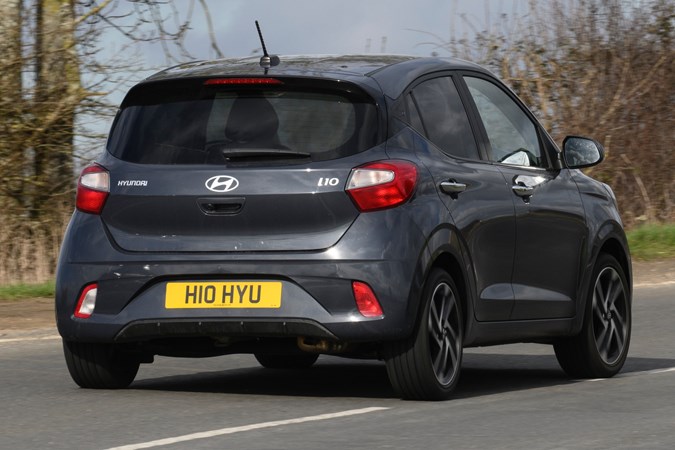
Unless you really have to have an auto, we’d pick the pleasant five-speed manual gearbox. The jerky and hesitant automated manual transmission that’s available on the non-turbo engines almost ruins the whole car.
What’s it like to drive?
- Neat and tidy in the corners
- Plenty of grip makes things surprisingly fun
- Little feedback from steering is to be expected
Let’s face it, most drivers buying a city car don’t want the last word in handling prowess – they want something that’s easy to drive in crowded streets, not on a racetrack. In this respect, the i10 does very well.
The i10’s light and accurate steering makes easy work of tight streets, and especially parking manoeuvres. It weights up enough at speed that you don’t twitch your way along faster roads, too, which we always like to see.
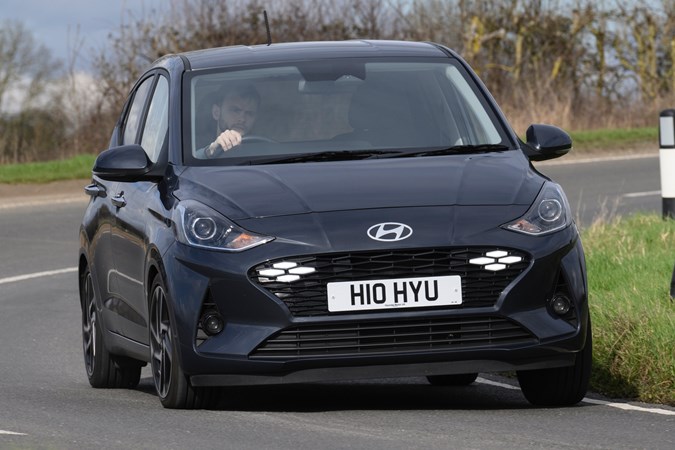
In terms of having a bit of fun with the i10, there’s lots of grip from those skinny front tyres. In Advance and Premium trim, the car can be hassled along rather well, although it’s not the sharpest supermini that ever lived.
If you want the best handling i10, head straight for the N Line. Chassis changes are numerous and boring, but we’ll talk about one in particular, and that’s new rear shock absorbers.
Essentially they control movements in the suspension, and in the N Line, they make the car stiffer. They’re palpably different from the regular i10 and the N Line is genuinely fun to drive. It changes direction quickly, and the steering never feels overly light. Good feedback through that N branded steering wheel too.


